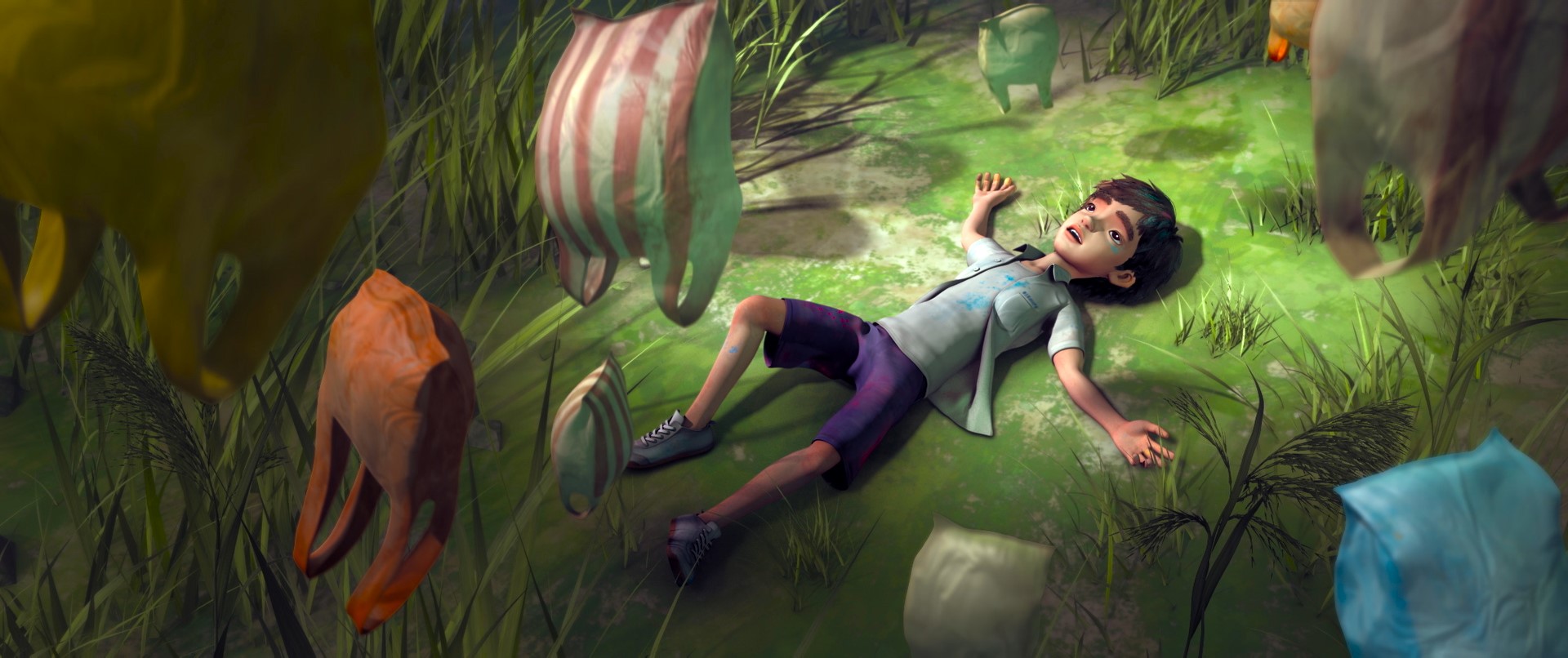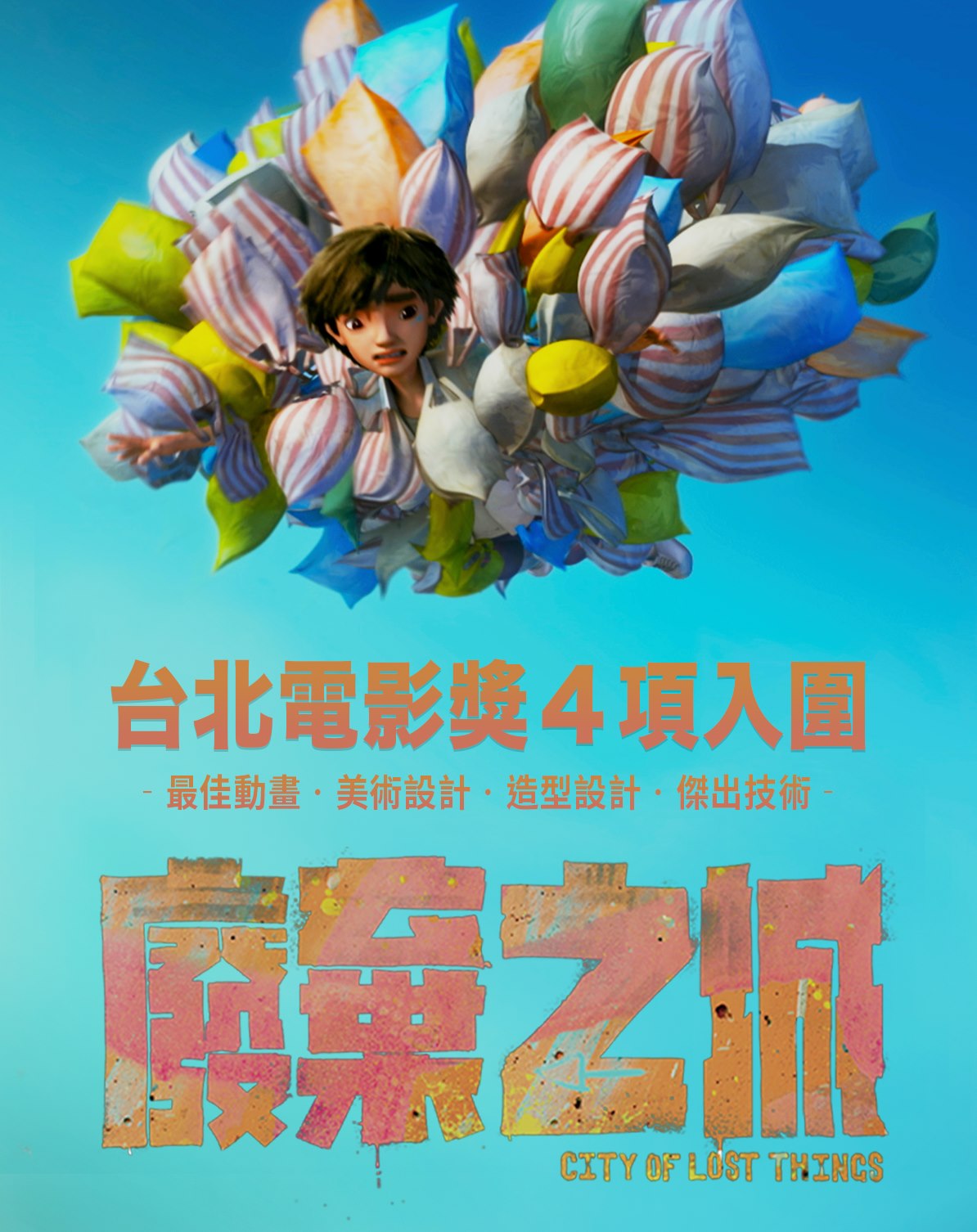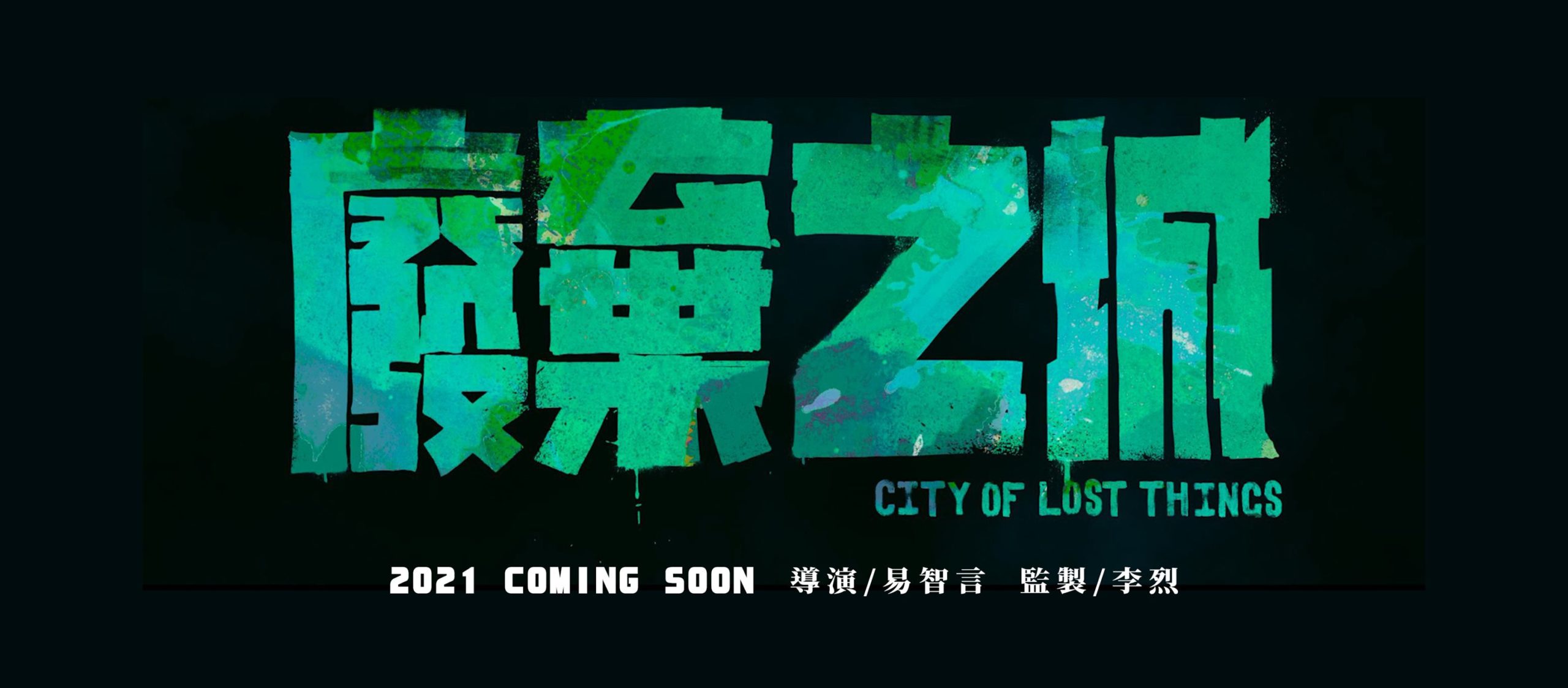by Brian Hioe
語言:
English
Photo Credit: 廢棄之城 City of Lost Things/Facebook
This is a No Man is an Island film review written in collaboration with Cinema Escapist. Keep an eye out for more!
CITY OF LOST THINGS (廢棄之城), a CGI animated film, surprises not only because of the well-scripted, tightly knit story but also because of its inventive animation. It manages this without relying on high-budget technical wizardry, per se, but by creative use of rather basic CGI elements. It is not surprising, then, that the movie won Best Animated Film at the Golden Horse Film Festival in 2020.
City of Lost Things tells the story of Xiao-shu, a troubled sixteen-year-old who runs away from home, feeling like he is discarded refuse in society. He unexpectedly stumbles across a group of animate, living trash items such as dolls, plastic bags, and umbrellas trying to flee from a garbage truck. He saves a shopping bag, Ah-Dai, from being pulled into the truck and befriends him.
Subsequently, Xiao-shu is invited to the titular City of Lost Things, a city whose inhabitants are discarded refuse, and befriends many of the local residents. Xiao-shu finds himself identifying with them, seeing as he views himself, too, as human garbage.

Film still. Photo credit: 廢棄之城 City of Lost Things/Facebook
Ah-Dai is among a group of residents hoping to flee from the city, in search of a legendary utopia that the residents believe will allow them to become more than garbage. To do this, Ah-Dai must escape the roving, marauding garbage trucks that try to suck up any piece of garbage they come across. He must also escape the ruler of the city, the local city god, who seeks to prevent escapees from the city for their own safety. Having found a group of friends and a place where finally feels belonging, Xiao-Shu doesn’t want to escape—and comes into conflict with Ah-Dai and other garbage.
City of Lost Things pays heavy homage to Toy Story, especially through some of its background characters, dinosaur toy Rex making a cameo during several chase scenes. The story also calls to mind the 2009 short film Plastic Bag, in which Werner Herzog narrates the life of a sentient plastic bag through its eternity of existence. Otherwise, particularly with the animation of the cityscape at night, one is reminded of 2005 Japanese CGI animated film Kakurenbo.
The movie is reliant on relatively simple character designs for its cast—Ah-Dai, for example, is literally just a plain plastic bag. Most of the garbage characters in the film are also indistinct and ordinary—the film manages to do quite a lot with rather simple animation. Key highlights include when Xiao-shu is welcomed to the City of Lost Things by a flock of plastic bags, a scene of dancing instruments and speakers in a disco, and a sequence in which a can of spray paint bounces through the city while fleeing.
The city god and his minions, consisting primarily of mannequins who have limbs replaced with lamps or other items, are another design triumph. If there is any shortcoming to the animation, it probably is that the story’s antagonists—the mechanized garbage trucks that suck up any garbage they come across—are indistinguishable from each other and prove rather nondescript, compared to the attentive and clever use of the garbage items.

Film poster. Photo credit: 廢棄之城 City of Lost Things/Facebook
Despite being the protagonist and the only human character, Xiao-shu proves relatively unsympathetic, betraying the other characters not once, but twice. However, if one sees the story as a metaphor for Xiao-shu’s inner turmoil, his foil, Ah-Dai, can easily be interpreted as reflecting the braver, selfless aspect of his character.
There are a few plot holes in the story, such as why the escaping garbage items set fire to part of the City of Lost Things as a diversion in their escape despite this already being a resolved plot point. Similarly, the conclusion drags on a bit unnecessarily long, adding a coda to the story that is not necessary and is, in fact, overly didactic. For a movie that seems to be primarily a children’s film, it is also a somewhat bizarre element to have a scene where Xiao-shu talks to a plastic condom wondering if it may be alive and sentient-though certainly memorable, it overshadows the rest of the film.
Nonetheless, City of Lost Things stands out as one of Taiwanese animation’s stronger offerings in recent years. The movie’s story of outcasts searching for utopia may not be terribly original, but it manages to get its point across well.



